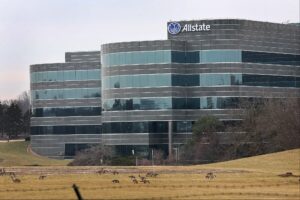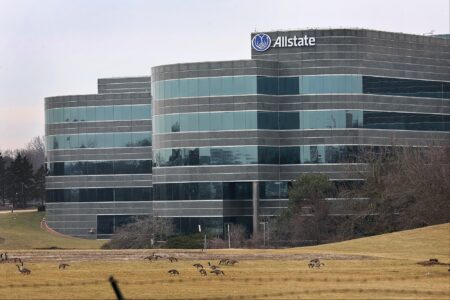Entrepreneur
By now, we have all experienced something like this: It’s the middle of a non-holiday week, and you pull up to a local restaurant or shop only to see a hand-drawn sign hanging ominously in the window. “Sorry, closed today.” You stand there for a moment. Is it a holiday?
Ten or 20 years ago, this rarely happened. But today, it’s commonplace. We are all aware now that stores are most likely closed at odd times because they are short-staffed.
This refrain is increasingly common and a harbinger of bigger issues to come. More importantly, it’s indicative of a workforce gap that can only get worse before it improves.
A new report, The Rising Storm, from labor market analytics firm Lightcast, analyzes Bureau of Labor Statistics and projects that only 6.4 million workers will join the labor force from 2022 to 2032. Just 3.8 million of those will be over the age of 65, and only 2.6 million people between 16 and 64 will enter the labor market in a 10-year period. For perspective, 25 million Baby Boomers entered the labor market in the 1970s.
So, why is that local shop having a tough time staying open? Only 900,000 people below the bachelor’s degree level will enter the market from 2022-2032. That is just 90,000 per year, which is precisely why those local shops and many businesses are struggling.
Related: How to Overcome the Shortage of Tech Talent in the US
What is behind the people shortage?
1. The Baby Boomers are retiring faster than the economy was ready to absorb: The baby boom added 76 million people into the U.S. labor market. This generation also had an extremely high labor force participation rate (LFPR), and many women entered the labor market during these years. Businesses of all types had an unprecedented supply of labor. From the 1970s to the 2000s, this led to not having enough work for all the potential labor.
But in 2020, when COVID-19 lockdowns were implemented and remote work was introduced en masse, Baby Boomers could afford to escape the emergency workplace transformations and exited the labor market in record numbers. Now, some five million have left within the past few years, many below the traditional retirement age of 65. Further, the demographics of industries like logistics, construction, manufacturing and healthcare have many workers over 55. As they rapidly exit the market, there are not enough people in younger generations to replace them.
2. The current workforce has a much lower labor force participation: The current LFPR is around 62%. This means that 62% of the prime-age workforce (16-64-year-olds) are actually working. During the 1970s and 1980s, the LFPR of Baby Boomers was around 80%.
Further, the total LFPR is projected to continue its downward trend over the next decade. Just a 2% decrease could mean the loss of two million prime-age workers.
3. The U.S. birthrate has been below replacement since the 1970s: According to the Centers for Disease Control and Prevention, the replacement rate in the U.S. is 1.62, meaning families have less than two children. For nations and labor markets to grow, they must be above a rate of 2.1 children per household, with each post-Baby Boomer generation staying below the replacement line. In fact, 2023 represented the lowest birth rate in recorded U.S. history, which ultimately means fewer people coming to handle all the work that needs to be done.
Related: I’m a CEO, Founder and Father of 2 — Here Are 3 Practices That Help Me Maintain My Sanity.
The incredible importance of early talent
This trifecta is hurting the labor market in unprecedented ways. A shortage of human capital—the most valuable asset to any economy — will prolong Americans’ economic struggles. Today, there aren’t enough plumbers, pilots, construction laborers, teachers, engineers, doctors and a host of other workers to meet society’s demands.
So, what can be done?
The first and best answer is to get more people. As the Lightcast report acknowledges, immigration is a primary element keeping the American economy in better shape than many other nations in regard to growing labor shortage issues. But immigration is still tricky because most other nations have low birth rates too. This workforce gap is a global problem, and we cannot solely rely on other nations to fill our labor needs.
The next solution is to improve domestic birth rates and LFPR. But these are difficult trends to reverse. Once birth rates drop below 2.1, they rarely reverse, even with dramatic policy interventions. LFPR will likely increase as Gen Xers and Millennials spend down their parents’ capital or decide to get married and start families.
Early talent strategy
The main solution that many businesses will need to focus on is an early talent strategy. Organizations that rely on a steady supply of people must move from tactical approaches to finding and developing talent to a more strategic approach.
Tactical approaches like running job advertisements hoping qualified people apply or retaining a recruiter to hire people away from other firms can be expensive and are becoming increasingly ineffective, as anyone in the human resources field can attest to.
The strategic approach to talent development is getting in front of potential candidates before they enter the labor market and even before they begin their search for a job. This means primary and secondary school. You might not be ready to hire them today, and they might not be ready to work for you yet. But awareness and relationship building go a long way. If you try to recruit and hire them after other organizations already have, it will be more difficult. Plus, there is not a plentiful supply of available talent in the first place.
So, if you are a business starting to feel the labor shortage and are just hoping that things will reverse in a few months or a few years, consider a more proactive approach to overcoming the shortage. Now is the time to rethink how you hire, recruit and find the talent you need. Your future pipeline depends on it.
Read the full article here












